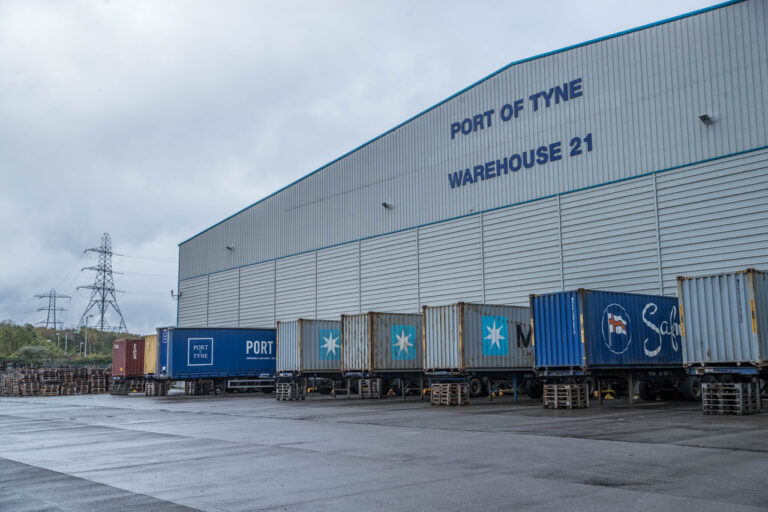The Port of Tyne is now operating a Net Zero Port Centric Warehouse, run entirely using clean energy from renewable sources.
Warehouse 21 is used by a wide range of the Port’s 3PL customers, including many house-hold brand names. All internal materials handling within the warehouse is conducted using electric vehicles powered through renewable sources and the lighting within the facility is provided by energy-efficient LEDs.
As part of Tyne 2050, the Port’s transformation strategy, more than £2 million has already been invested into new clean energy assets and logistics facilities. This includes energy-efficient LED lighting across the entire Port estate and electrified materials handling equipment, all supported by an advanced warehouse management system. A fully Net Zero warehouse demonstrates the Port’s ongoing commitment to helping its 3PL customers achieve their environmental sustainability targets, whilst also improving the carbon footprint of the wider logistics and transport industry.
“Offering green warehousing services is critical to our 3PL customers, because it means these businesses can source the space they need, while also meeting their sustainability targets,” commented Matt Beeton, CEO at the Port of Tyne. “Net Zero achievements are a key part of our Tyne 2050 strategy and at a time when there is exceptional demand for warehousing, we can offer customers the advantage of high-quality port-centric warehousing, efficiency and sustainability.”
The Port of Tyne set out ambitious environmental sustainability targets in its Tyne 2050 strategy, including becoming a carbon-neutral port by 2030 and all-electric by 2040. In addition, the Port intends to become a test bed for new clean energy technology by 2025. A range of initiatives are already well underway to enable the Port to achieve these objectives and by the end of 2021, more than 27% of total CO2 emissions will have been reduced through switching to clean alternatives. In 2020, these improvements were recognised by Maritime UK, which awarded the Port of Tyne two industry awards, for Clean Energy Operator and Clean Energy Enabler.
Port-centric logistics is a popular option for many businesses looking to reduce road haulage miles after shipping goods into the UK from global suppliers. Government statistics show that HGVs account for around 17% of UK greenhouse gas emissions from road transport and around 21% of road transport NOₓ emissions, while making up just 5% of vehicle miles. Figures show that moving goods by sea using coastal shipping services saves around 80% CO2 compared to the road transport alternative.
Storing goods directly at the Port means any onwards shipping is minimised because goods are only moved as necessary. Now, as a result of working with the Port of Tyne, port-centric logistics customers can further reduce the CO2 emissions remaining in their supply chains, by benefiting from the Port’s sustainable materials handling.
The Port of Tyne has over 50,000m² of fully racked and Customs-approved port centric warehousing available for commercial customers. Warehouse 21 is a multi-use warehouse and provides high quality storage for tea and a range of consumer and industrial products.







